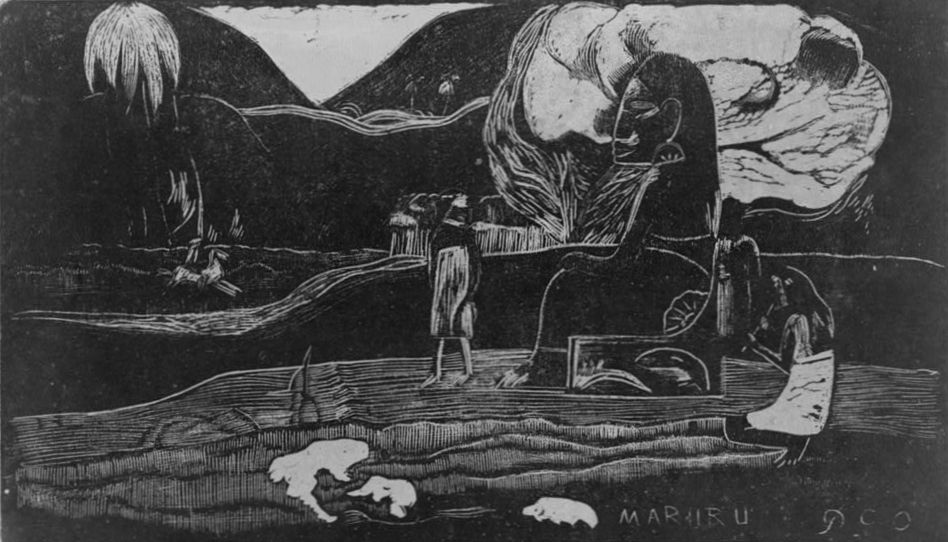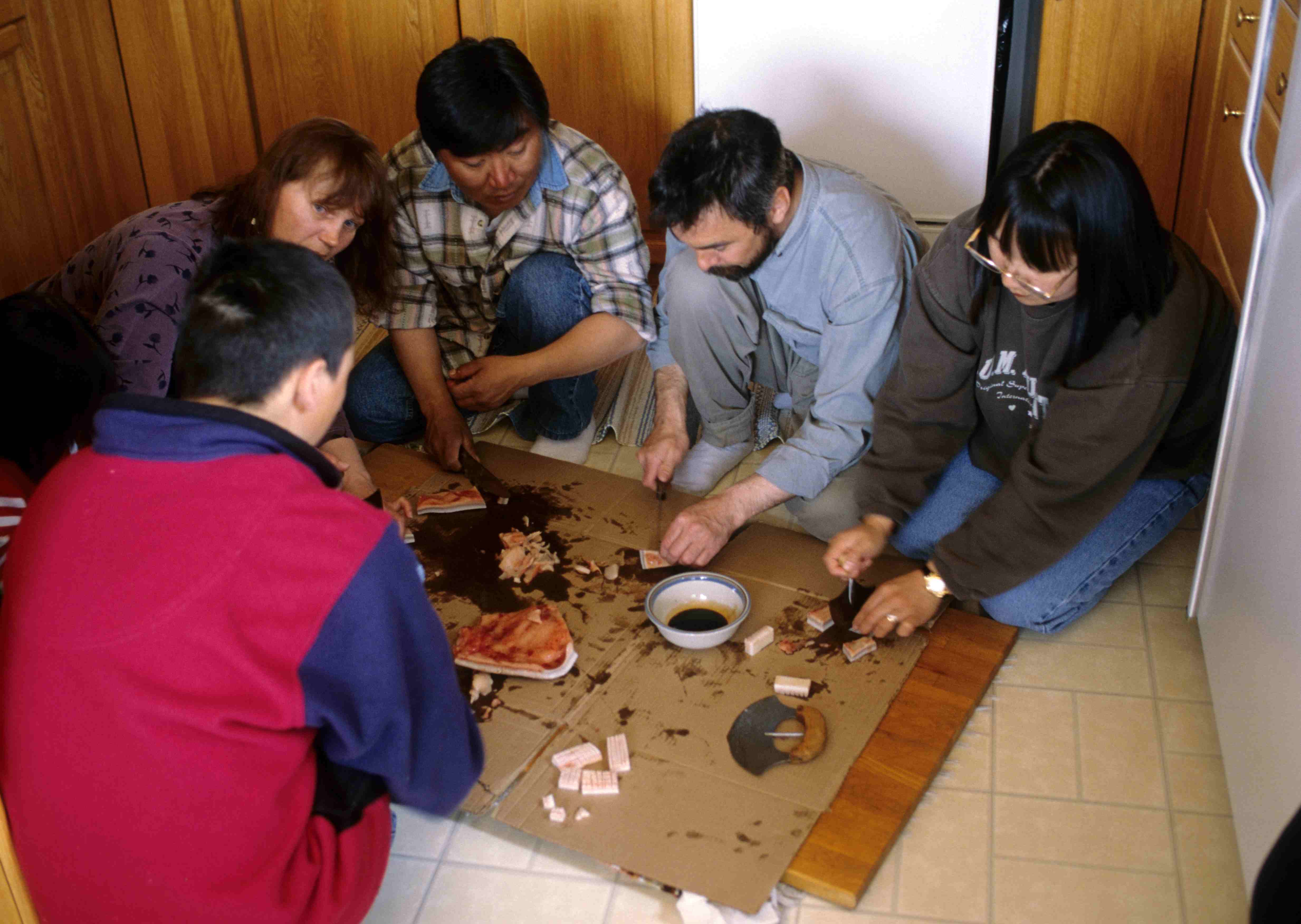|
Hina-au-kekele
Hina-au-kekele (also known as Hina-au-aku, Hinauapu or simply Hina) was a Hawaiian noble lady and Chiefess of the Island of Hawaii (Big Island). She was the sister-wife of the High Chief Pilikaaiea of Hawaii, and they were the founders of the dynasty named Pili line (Hawaiian: ''Hale o Pili''). Biography Hina was born on Tahiti as the daughter of Hawaiian nobleman Laau and his sister-wife, the noble lady called Kukamolimaulialoha (Kukamolimolialoha). It is unknown why her father and mother went to Tahiti. Hina's grandfather was the High Chief Lanakawai of Hawaii (a descendant of Ulu). Hina was named after the goddess Hina. The brother of Hina was Pilikaʻaiea, who is often simply known as Pili. They were married, and their sexual union was considered sacred, according to the Hawaiian customs and laws. Their children were: *Koa (Ko) — a son * Hinaʻauamai — a daughter (also named after Hina) and the wife of her brother Hina and Pilikaaiea came to Hawaii together with the ... [...More Info...] [...Related Items...] OR: [Wikipedia] [Google] [Baidu] |
Pilikaʻaiea
Pilikaʻaiea (or Pili-auau; the short form: Pili) was ''Aliʻi Nui'' of Hawaiʻi. He was a sovereign chief, who deposed the indigenous chief, Kapawa. Name The Hawaiian word ''pili'' is the native Hawaiian name of ''Heteropogon contortus''. Biography Pilikaʻaiea was a grandchild of Lanakawai of the Ulu line, but he was born and brought up in "Kahiki" (Tahiti). The parents of Pilikaʻaiea were Laʻau and Kukamolimaulialoha, whilst the wife of Pilikaʻaiea was his sister, Hina-au-kekele. Because the chiefs of (the island of) Hawaiʻi had carelessly intermarried with junior chiefly lines, ''kahuna'' Paʻao went to Kahiki to find a relative of pure blood who could compete in rank with the chiefly lines of the other islands. He recites a chant to invite Lonokaeho to return with him. Lonokaeho declines the invitation, but sends Pilikaʻaiea in his place. Pilikaʻaiea becomes high chief and wins the support of the people and he becomes the ancestor of the chiefs of Hawaiʻi on the ... [...More Info...] [...Related Items...] OR: [Wikipedia] [Google] [Baidu] |
Hina (goddess)
Hina is the name assigned to a number of Polynesian deities. The name Hina usually relates to a powerful female force (typically a goddess or queen) who has dominion over a specific entity. Some variations of the name Hina include Sina, Hanaiakamalama, and Ina. Even within a single culture, Hina could refer to multiple goddesses and the distinction between the different identities are not always clear. In Hawaiian mythology, the name is usually paired with words which explain or identify the goddess and her power such as Hina-puku-iʻa (Hina-gathering-seafood) the goddess of fishermen, and Hina-ʻopu-hala-koʻa who gave birth to all reef life. Hina continues to be a figure worshiped in many of the Polynesian religionsStokes, J. F. G., Heiau of Molokai. 1909 in MS. ''The Ancient Worship of the Hawaiian Islanders'', edited by W. T. Bringham. Archives, B.P. Bishop Museum, Honolulu. and her stories serve as traditions that unite Polynesia, specifically the Hawaiian Islands. New Zea ... [...More Info...] [...Related Items...] OR: [Wikipedia] [Google] [Baidu] |
Pili Line
Pili line (House of Pili, Pili dynasty; Hawaiian language: ''Hale o Pili'') was a royal house in ancient Hawaii that ruled over the island of Hawaiʻi with deep roots in the history of Samoa and possibly beyond further to the west, Ao-Po ("gathering of night"; metaphorically: "extreme west", "the land of the dead"), in Pulotu, the Samoan Underworld. It was founded on unknown date by King Pilikaʻaiea (Pili), who either was born in or came from either Upolu, Samoa or Uporu, Tahiti, but came to Hawaii and established his own dynasty of kings (''Aliʻi''). The overall arc of his career describes a brilliant young chief from foreign lands who was eager to share his abundant knowledge of advanced technology with distant frontier rustics. Some stories relate how his ambition got the better of him and damaged his relationships with his subjects. These stories cast him as a libidinous, restless and petty tyrant ever on the move searching for new conquests. According to Samoan lore, Pili ... [...More Info...] [...Related Items...] OR: [Wikipedia] [Google] [Baidu] |
Lanakawai
Lanakawai—also known as Lanaikawai and Lonokawai—was an ancient Hawaiian nobleman, who was a Prince of the island of Maui. He became a High Chief of the island of Hawaiʻi (the Big Island). His grandson was the founder of the Pili line, a dynasty of the chiefs of the Big Island. Biography It is likely that Lanakawai was born on Maui. He was a son of the High Chief Hanalaʻa, ruler of Maui. The mother of Lanakawai was Mahuia, Lady of Maui, and she is also called Mahuie, whilst the brother of Lanakawai was High Chief Mauiloa. Mauiloa became a ruler of Maui, whilst Lanakawai became a ruler of Hawaiʻi. Lanakawai married his sister, Lady Kalohialiʻiokawai, who was also called Kolohialiʻiokawai. They had at least two children: *Laʻau — son *KukamolimaulialohaPeleioholani, Solomon Lehuanui Kalaniomaiheuila (1906). ''Genealogy of the Robinson family, and ancient legends and chants of Hawaii''. — daughter Laʻau and his sister were married, and they went to Kahiki (Tahi ... [...More Info...] [...Related Items...] OR: [Wikipedia] [Google] [Baidu] |
Paʻao
Paao is a figure from Hawaii. He is most likely a Hawaiian historical character retold through Hawaiian legend. According to Hawaiian tradition and folklore, he is said to have been a high priest from Kahiki, specifically "Wewaʻu" and "ʻUpolu." In Hawaiian prose and chant, the term "Kahiki" is applied in reference to any land outside of Hawaii, although the linguistic root is conclusively derived from Tahiti. "Wewaʻu" and "Upolu" point to actual places in the Society Islands, Samoa, and Hawaiian scholars and royal commentators consistently claim Paao came from Samoa; he was a Samoan priest with properties in both Tonga and Samoa. He arrived on the north shores of the Big Island and named it "Upolu" after Samoa main village (also known as "Western Samoa"). Scholars of Hawaiian lore including David Malo, Samuel M. Kamakau, John Papa ʻĪʻī, Solomon Peleioholani, Teuira Henry, and Stephen L. Desha support the notion that Pili and Pa'ao immigrated from the Society Islands of Sa ... [...More Info...] [...Related Items...] OR: [Wikipedia] [Google] [Baidu] |
Hawaii (island)
Hawaii ( ; haw, Hawaii ) is the List of islands of the United States by area, largest island in the United States, located in the U.S. state, state of Hawaii. It is the southeasternmost of the Hawaiian Islands, a chain of High island, volcanic islands in the Pacific Ocean, North Pacific Ocean. With an area of , it has 63% of the Hawaiian archipelago's combined landmass. However, it has only 13% of Hawaiʻi's population. The island of Hawaiʻi is the third largest island in Polynesia, behind the two main List of islands of New Zealand, islands of New Zealand. The island is often referred to as the Island of Hawaii or Hawaii Island to distinguish it from the state. It is also referred to as the Big Island. Administratively, the island is coextensive with Hawaii County, Hawaii, Hawaii County. As of the 2020 United States census, 2020 census, the population was 200,629. The county seat and largest town is Hilo, Hawaii, Hilo. There are no Municipal corporation, incorporated cities i ... [...More Info...] [...Related Items...] OR: [Wikipedia] [Google] [Baidu] |
Tahiti
Tahiti (; Tahitian ; ; previously also known as Otaheite) is the largest island of the Windward group of the Society Islands in French Polynesia. It is located in the central part of the Pacific Ocean and the nearest major landmass is Australia. Divided into two parts, ''Tahiti Nui'' (bigger, northwestern part) and ''Tahiti Iti'' (smaller, southeastern part), the island was formed from volcanic activity; it is high and mountainous with surrounding coral reefs. Its population was 189,517 in 2017, making it by far the most populous island in French Polynesia and accounting for 68.7% of its total population. Tahiti is the economic, cultural and political centre of French Polynesia, an overseas collectivity and an overseas country of the French Republic. The capital of French Polynesia, Papeete, is located on the northwest coast of Tahiti. The only international airport in the region, Faaā International Airport, is on Tahiti near Papeete. Tahiti was originally settled by Pol ... [...More Info...] [...Related Items...] OR: [Wikipedia] [Google] [Baidu] |
Ulu (chief)
An ulu ( iu, ᐅᓗ, plural: ''uluit'', 'woman's knife') is an all-purpose knife traditionally used by Inuit, Iñupiat, Yupik, and Aleut women. It is utilized in applications as diverse as skinning and cleaning animals, cutting a child's hair, cutting food and, if necessary, trimming blocks of snow and ice used to build an igloo. Name In the Nunatsiavummiutut variety of Inuttitut, which is spoken in Nunatsiavut (Northern Labrador), the word is spelled , and in Tunumiit (East Greenlandic) it is or . The following chart lists both Eskimo-Aleut terms as well as two terms for the same tool in Athabaskan languages, which are an unrelated language family spoken by non-Inuit-Iñupiat-Aleut Alaska Natives. Materials Traditionally the ulu was made with a caribou antler, muskox horn or walrus ivory handle and slate cutting surface, due to the lack of metal smelting technology in the Arctic. The handle could also be carved from bone, and wood was sometimes used when it was available. In ... [...More Info...] [...Related Items...] OR: [Wikipedia] [Google] [Baidu] |
Ancient Hawaii
Ancient Hawaii is the period of Hawaiian history preceding the unification in 1810 of the Kingdom of Hawaii by Kamehameha the Great. Traditionally, researchers estimated the first settlement of the Hawaiian islands as having occurred sporadically between 400 and 1100 CE by Polynesian long-distance navigators from the Samoan, Marquesas, and Tahiti islands within what is now French Polynesia. In 2010, a study was published based on radiocarbon dating of more reliable samples which suggests that the islands were settled much later, within a short timeframe, in about 1219 to 1266. The islands in Eastern Polynesia have been characterized by the continuities among their cultures, and the short migration period would be an explanation of this result. Diversified agroforestry and aquaculture provided sustenance for Native Hawaiian cuisine. Tropical materials were adopted for housing. Elaborate temples (called ''heiau'') were constructed from the lava rocks available. The rich natural ... [...More Info...] [...Related Items...] OR: [Wikipedia] [Google] [Baidu] |
Hina (chiefess) ' ...
Hina may refer to: People and deities * Hina (given name), including a list of people and fictional characters with the name * Hina (chiefess), a name given to several noble ladies who lived in ancient Hawaii * Hina (goddess), the name assigned to a number of Polynesian deities. * Hina (singer), of 2021 group Lightsum Other uses * Hina, Cameroon, a town * Hina language, a Chadic language spoken in northern Cameroon * HINA (''Hrvatska izvještajna novinska agencija''), the Croatian news agency * Hina, a synonym of ''Gasparia'', a genus of spiders * Cyclone Hina (other), several tropical cyclones See also * Henna, a dye, and the temporary body art resulting from the staining of the skin from the dyes * ''Hinamatsuri , also called Doll's Day or Girls' Day, is a religious (Shinto) holiday in Japan, celebrated on 3March of each year. Nussbaum, Louis-Frédéric (2005)"Hina Matsuri"in ''Japan Encyclopedia'', p. 313. Platforms covered with a red carpet–mater ... [...More Info...] [...Related Items...] OR: [Wikipedia] [Google] [Baidu] |
.jpg)



